Genetic progress and economic benefit of community-based breeding programs for sheep out- and upscaling options in Ethiopia

Authors:
In this study, expected genetic progress and economic benefits from implementing three community-based breeding programs for sheep (CBBP) out- and upscaling strategies were investigated. Strategy 1 is to replicate average existing CBBPs, strategy 2 is to increase the number of breeding males produced and disseminated by average CBBPs and strategy 3 is to intensify the use of breeding males with artificial insemination (AI). The strategies were modelled using field and market data from Ethiopian Menz sheep. The data included costs incurred by nucleus farmers to run the breeding program and base farmers to pay for improved rams. Genetic progress in six-month weight and economic benefit in US dollars with a reference planning horizon (H) of 20 years and a discount rate (r) of 0.07 were calculated using gene flow techniques. Genetic progress expected in average existing CBBPs came to 0.11 kg/year and accumulated discounted economic benefit (income/costs) was USD54,290 with a return on investment (income/costs) of USD5.1 per dollar invested. Thus, strategy 1, which replicates ongoing CBBPs, ranked highly beneficial. Strategy 2 was tested with 200 improved rams purchased at 1.1 times their meat market value. Accumulated discounted economic benefit with this strategy resulted in USD133,317 and return on investment was calculated at USD14.1. Cost of improved rams would need to be 2.5 times the current meat market value to make this strategy unprofitable. Strategy 3, taking advantage of AI, was tested in two ways: using fewer rams to increase selection differential in the nucleus of a CBBP (strategy 3a) and increasing the number of ewes in general herds served with improved rams (strategy 3b). Feasible AI programs were modelled allowing for lower conception rates and including all AI costs in the economic analyses. Strategy 3a increased genetic progress of six-month weight from 0.11 to 0.14 kg/year and strategy 3b increased the number of improved lambs from 7290 to 12,474. Therefore, incomes became larger but so did costs, leading to very low or negative benefits. Considering a shorter planning horizon (H = 10) and a larger discount rate (r = 0.12) would reduce benefits and returns to investment but would not change the general finding that out-scaling current CBBPs or upscaling the number of improved males from current CBBPs for dissemination are highly recommendable strategies for livestock development. However, AI, at current conception rates and costs, can only be justified with major subsidies or under specific circumstances.
